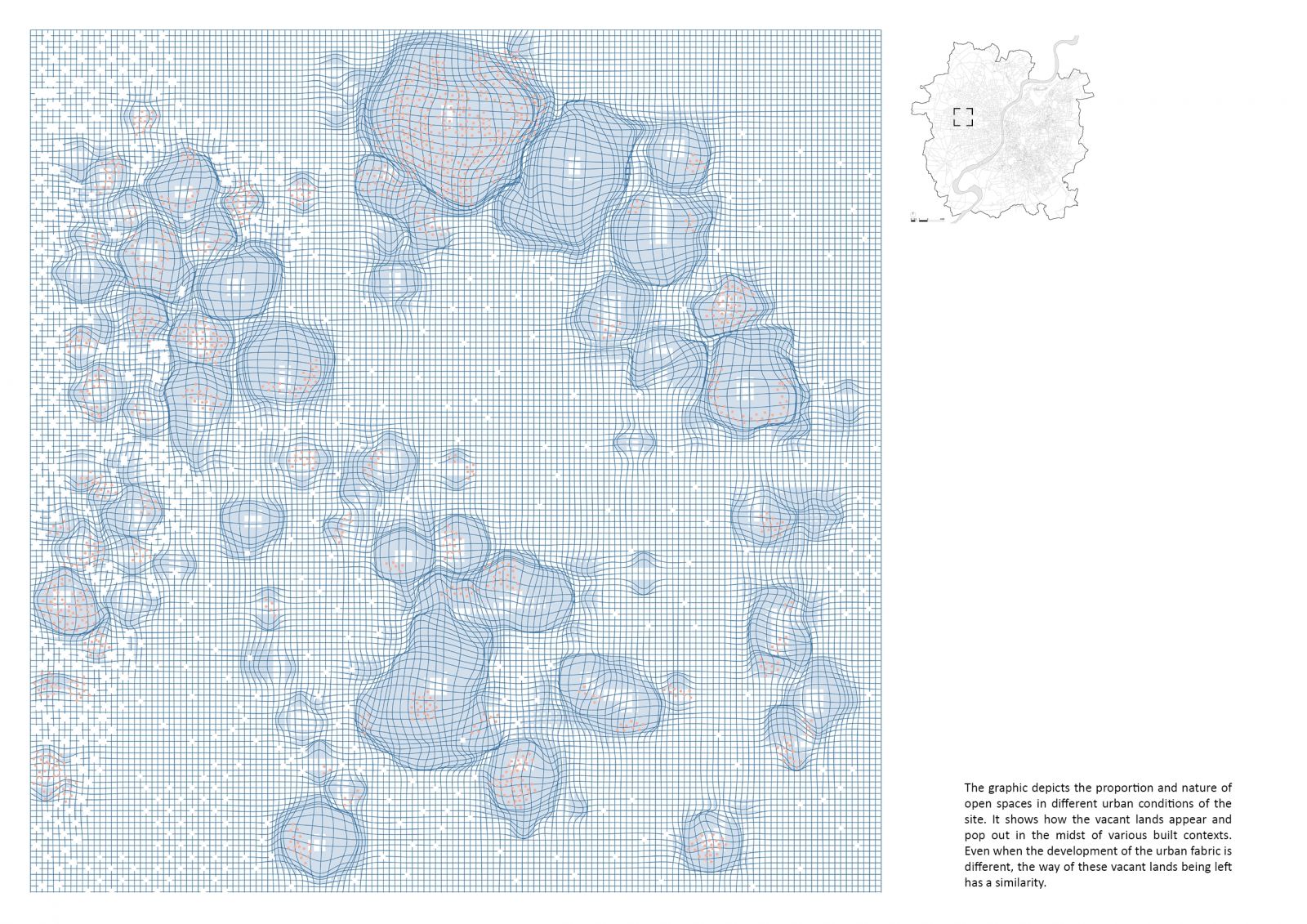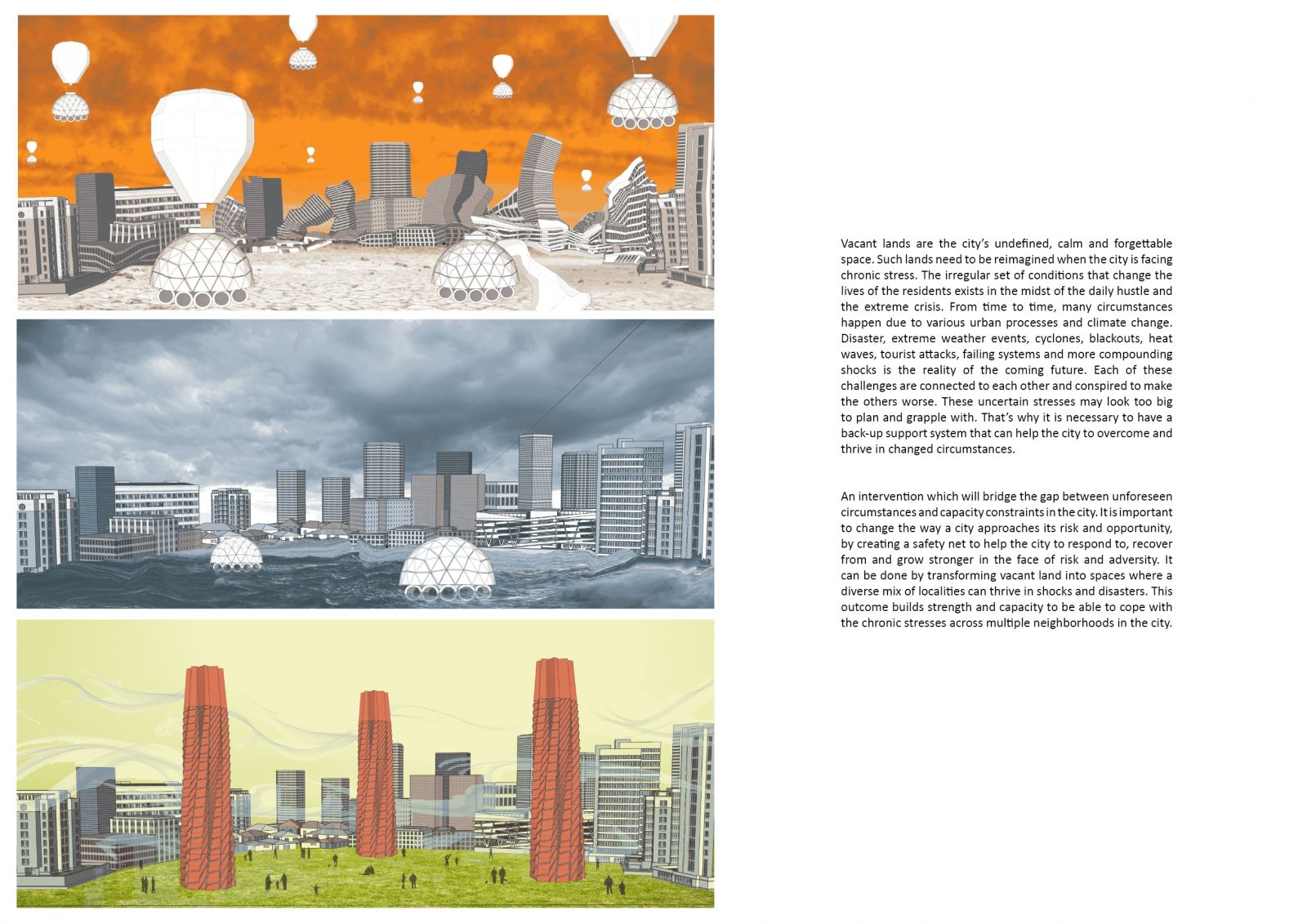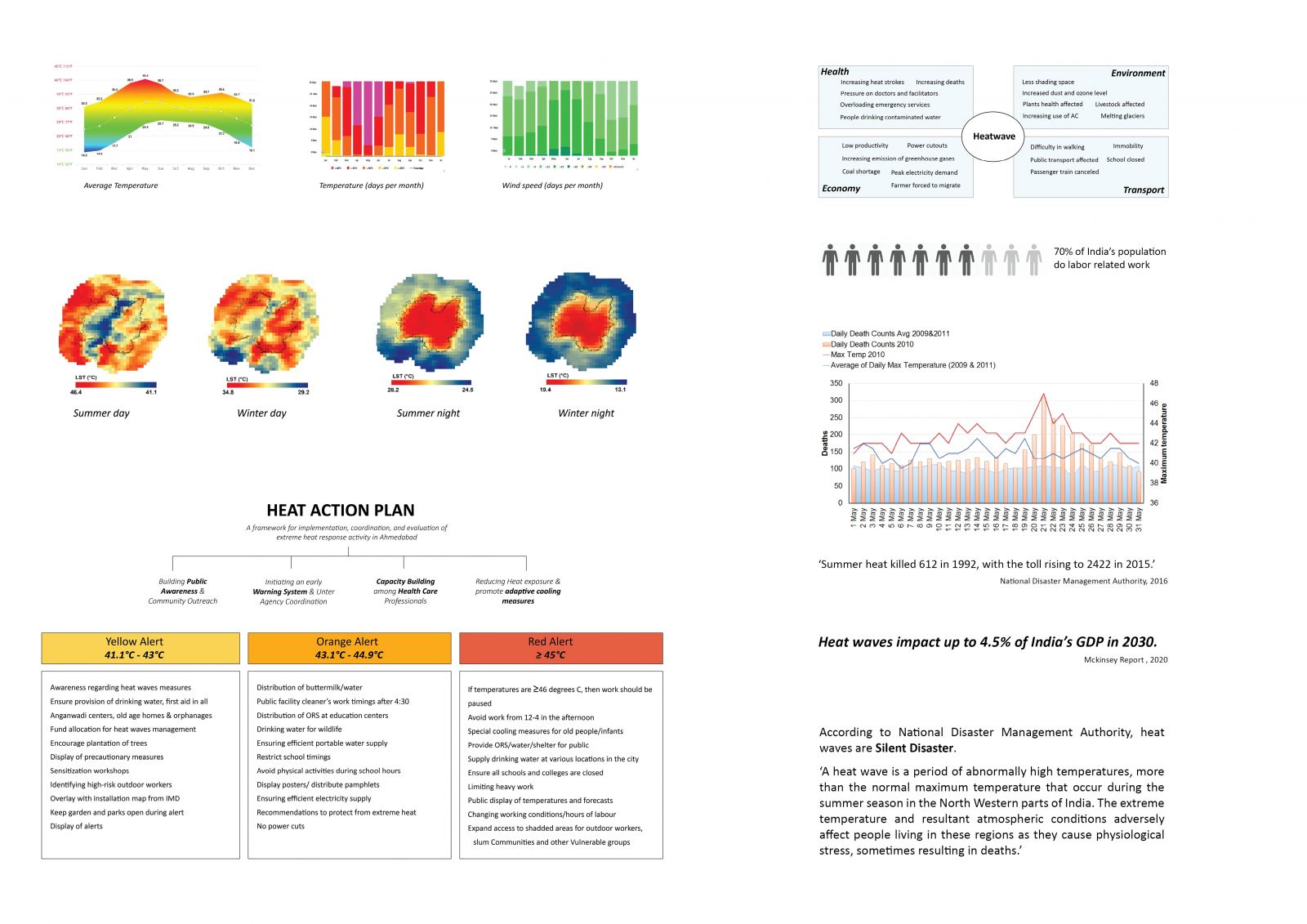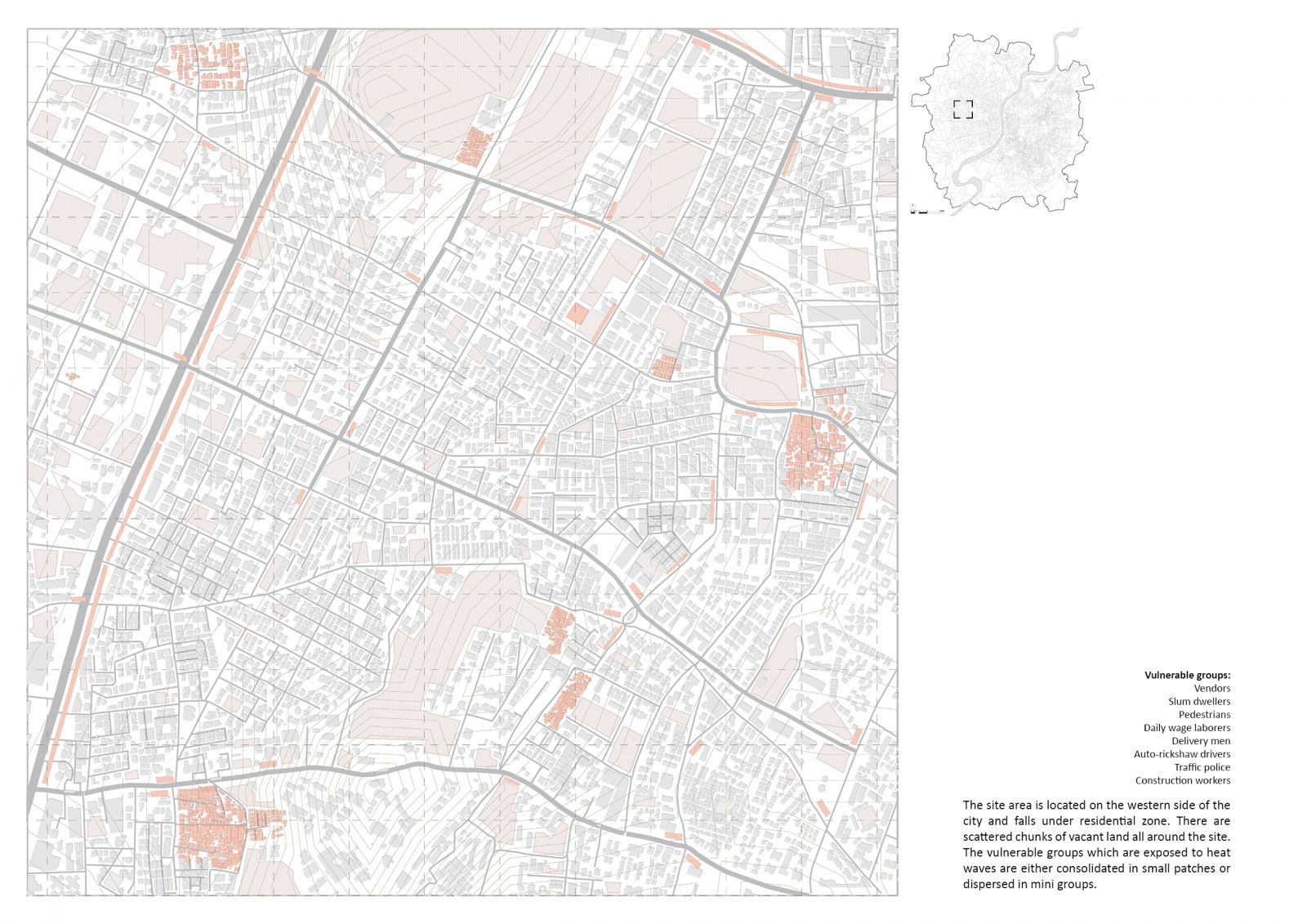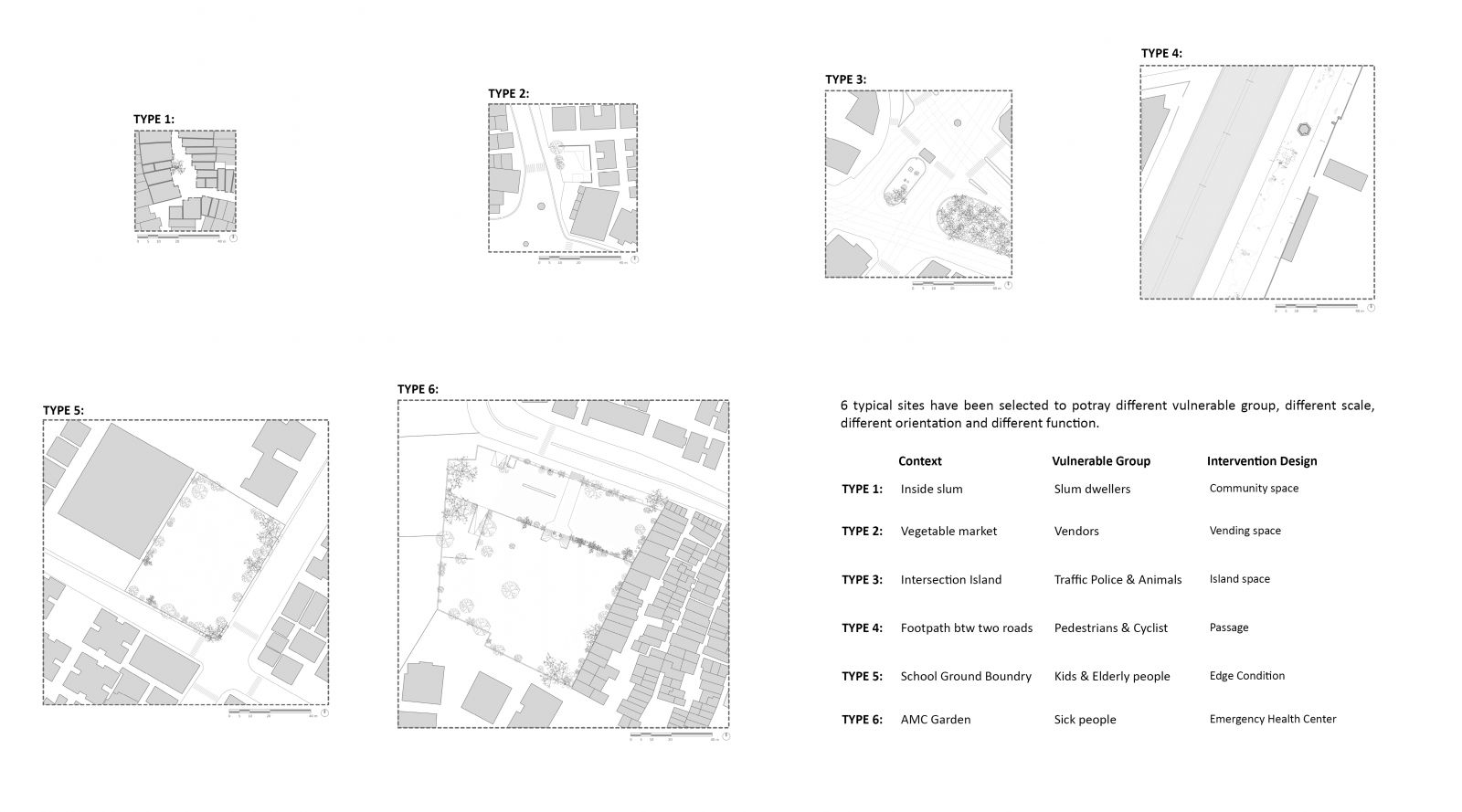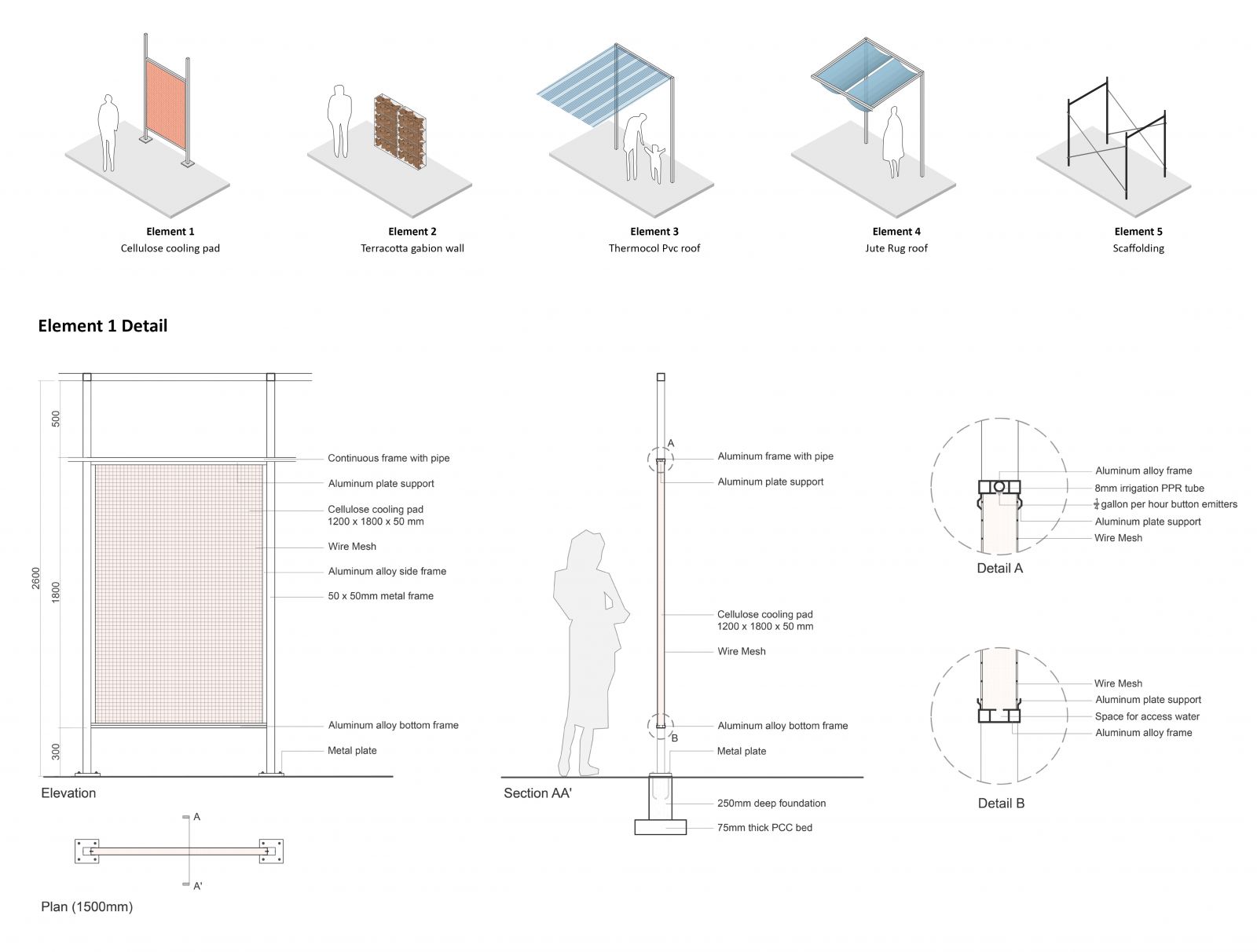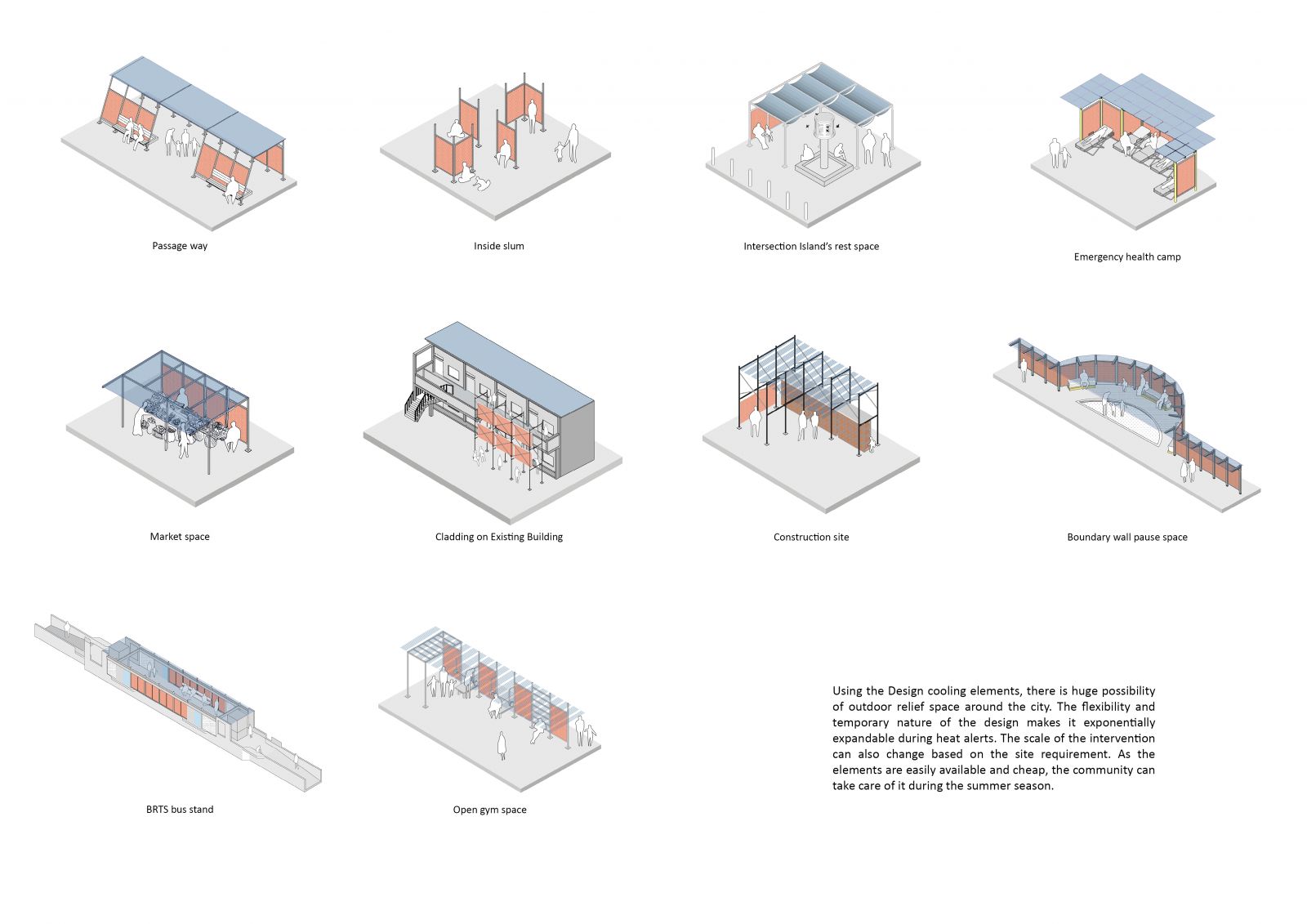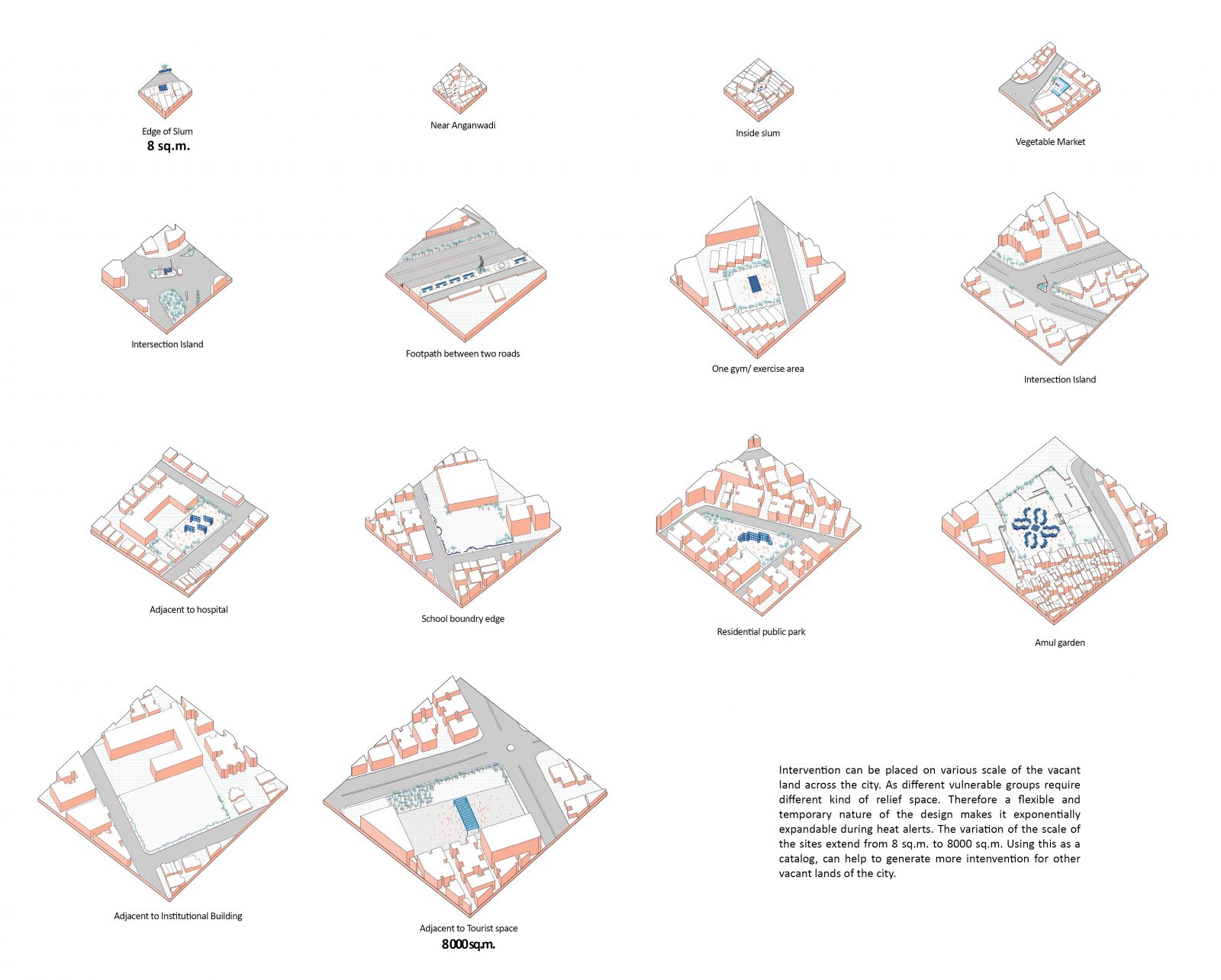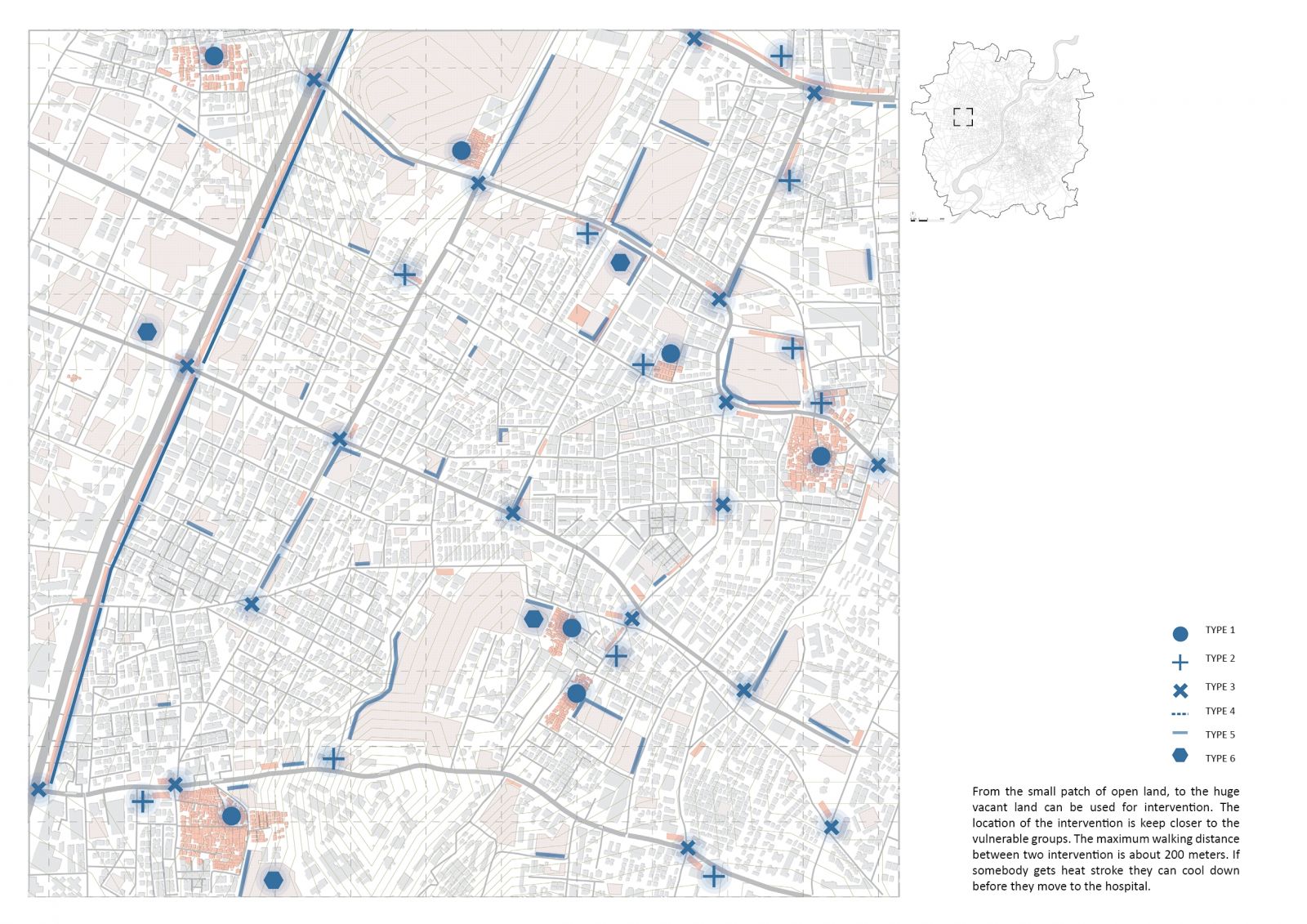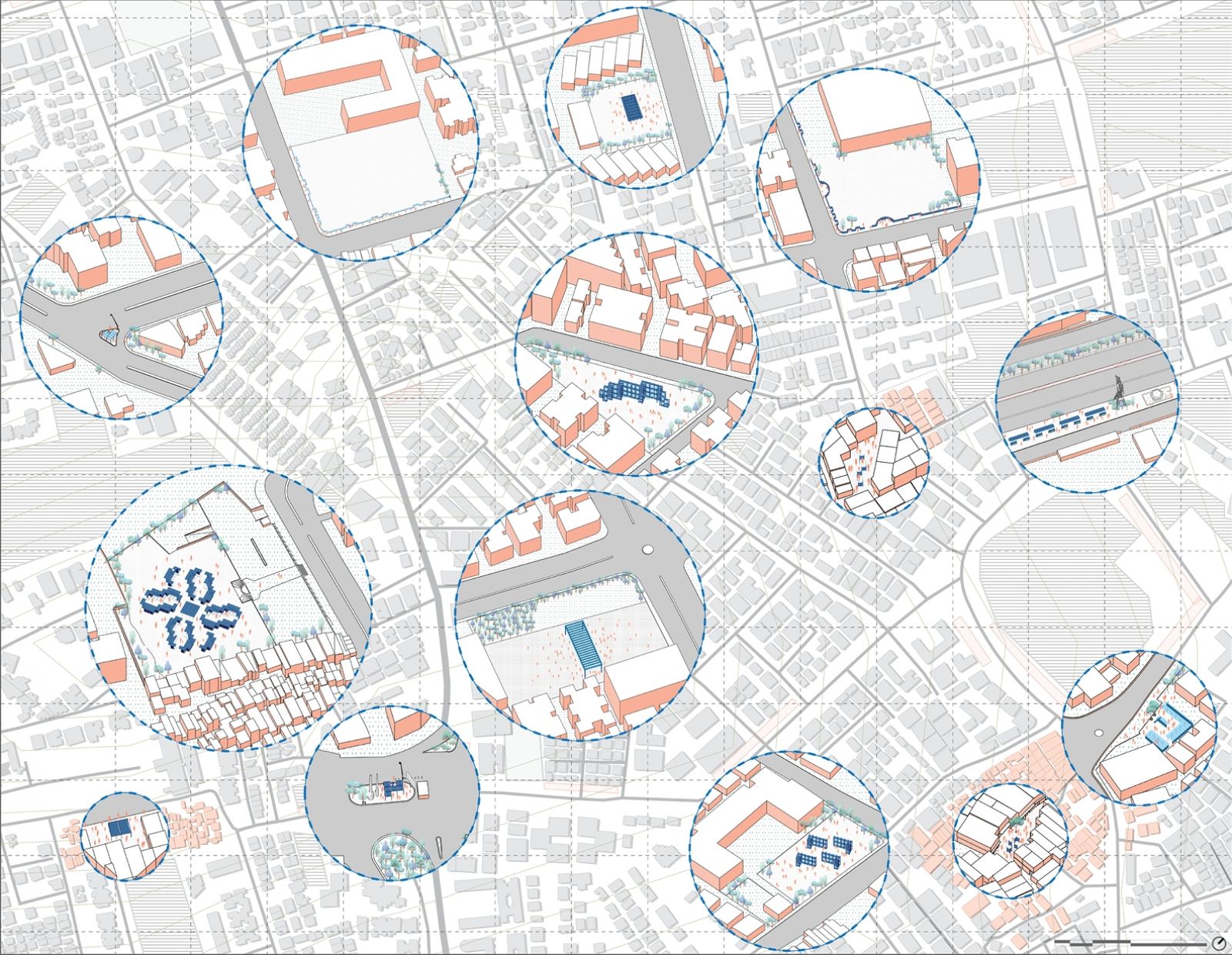Your browser is out-of-date!
For a richer surfing experience on our website, please update your browser. Update my browser now!
For a richer surfing experience on our website, please update your browser. Update my browser now!
Vacant lands are the city’s undefined, calm and forgettable space. Such lands need to be reimagined when the city is facing chronic stress. In Ahmedabad, 11 million people are at a high risk of living on an urban heat island. The most impacted people are vulnerable groups like vendors, slum dwellers, pedestrians, daily wage labourers, delivery men, auto-rickshaw drivers, traffic police and construction workers. Therefore, there is a need of an intervention which can provide a relief space for such vulnerable groups in various scales of vacant land around the city.Using simple techniques of evaporative cooling, shading and providing heat stroke kits can help people to sustain themselves during heat alerts. The intervention aims to provide a relief space every 200 meters in the city, so that it can create an overall impact on the microclimate of the neighborhood.
View Additional Work